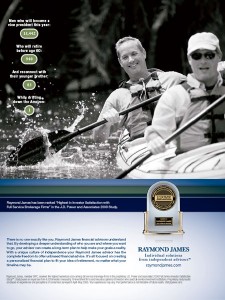Investment research analysts can learn to write better. In his guest post, Joe Polidoro gives directors of research his advice on how to make this happen. I’m delighted to have met another advocate of good investment writing thanks to Twitter, where Joe tweets as @joepolidoro.
Making Research Readable
By Joe Polidoro
Is it worthwhile, or even possible, to improve the quality of your research analysts’ writing? Yes and yes, and I’ll tell you how. First, the business case.
It seems reasonable that good writing—clear, engaging, memorable—should be more effective than sub-par writing at reaching your audience. But let’s see the numbers.
One of the best proofs I’ve come across is courtesy of Dame Marjorie Scardino, CEO of Pearson PLC and former CEO of the Economist Group (hat tip: Vicki Cobb and I.N.K.)
Scardino located a study in which three groups—linguists, writing professors, and journalists –were asked to improve passages taken from a history textbook. Students were then asked to read the original passages and the rewrites and immediately record as much as they could remember.
Recall of the journalists’ rewrites beat recall of the other groups’ rewrites and of the original text by a whopping 40%. Good writing matters.
And I think average writers, including research analysts, can measurably improve their writing—with the right help.
First, look for a writer
In your quest for a writing coach, avoid anyone who doesn’t make a living—and a decent one—by writing. As Stephen King said, anyone who is paid to write knows how to write effectively. Professional writers “get the story told memorably … and quickly,” says Scardino. Those who make their living doing other things, including the teaching of writing, usually can’t.
Hire a writer/coach
A writing pro isn’t necessarily a good writing teacher, however. Aside from references, here’s how to tell. Effective teaching is less about charisma, more about preparation, perseverance, and a passion for the work. So ask questions: What are you going to teach my analysts? What are your goals? What’s your plan? How will you deal with indifference or egomania?
Your writer/coach should be quick with confidence-inspiring answers. Look for someone who emphasizes telling a story (yes, even in a research report), clarity, and effective editing. Steer clear of those who get deep into grammar and theory. Good writer/coaches use real examples and show how it’s done.
Follow through with your swing
No writer/coach worth hiring will promise to improve your analysts’ writing in one session. A golfer won’t significantly improve her game with a 3-hour lesson. If she’s serious, she’ll take a series of lessons over the season. And writing well is harder than golfing well.
It doesn’t have to be extensive—even three 45-minute sessions over four to eight weeks with your most problematic analysts will work. But set aside budget for this. It’ll show you’re serious. And it will make whoever you hire that much more effective.
Joe Polidoro spent over a year improving the equity research reports at Bear Stearns, where he worked with past and future research stars including Lee Seidler, Lincoln Anderson, Larry Kudlow, Joe Buckley, Jami Rubin, and Steve Binder. Joe now co-heads Triplestop LLC, a marketing agency specializing in asset management and related industries.
____________________
Receive a free 32-page e-book with client communications tips when you sign up for my free monthly newsletter.
Copyright 2010 by Susan B. Weiner All rights reserved








